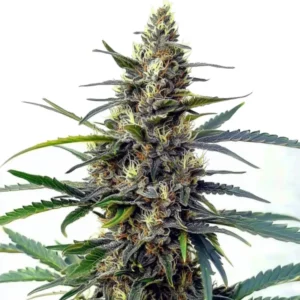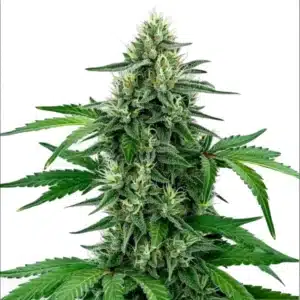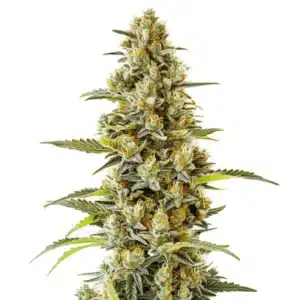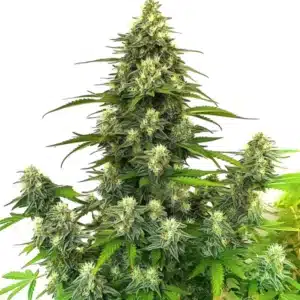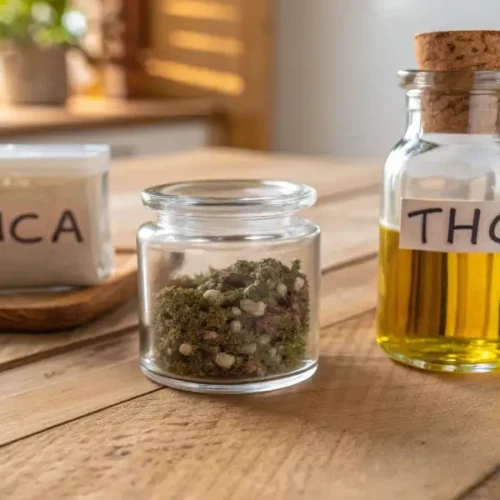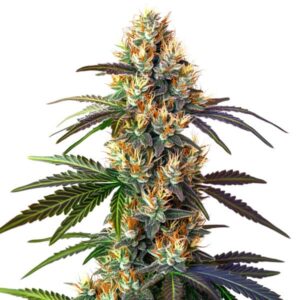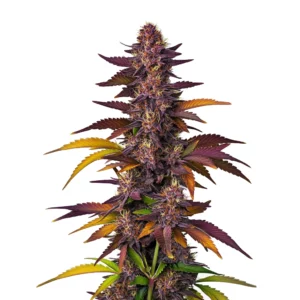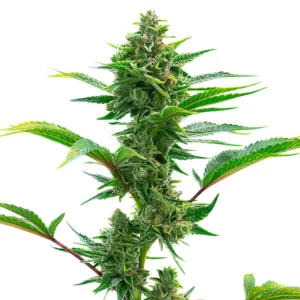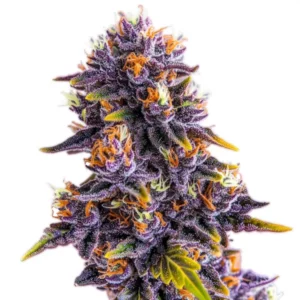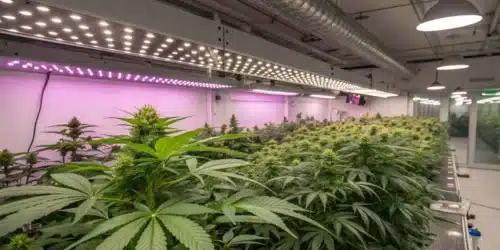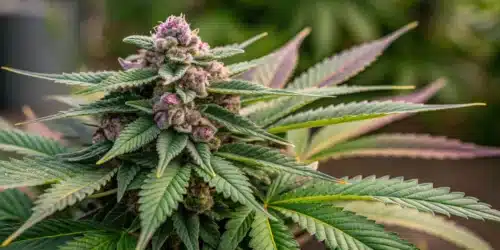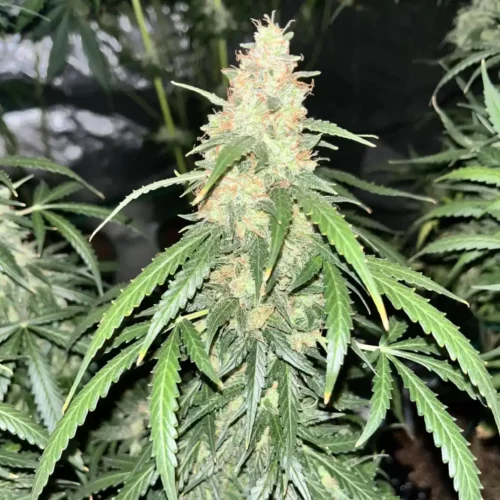LSD Weed Strain Description
The LSD strain is a high-THC cannabis variety known for its potent effects and resilience during cultivation. With THC levels ranging from 19% to 24%, this strain offers a powerful, long-lasting high that appeals to both recreational and medicinal users. LSD Weed Strain is a cross between the classic Mazar Sharif and Skunk #1, creating a strain that leans towards the Indica side, delivering a relaxing yet euphoric experience.
These buds are dense and covered in a thick layer of resin, making them visually appealing and highly potent. The flavor profile is equally impressive, offering a combination of earthy, skunky, and sweet notes. The terpene profile includes Alpha Bisabolol, Alpha-Pinene, Beta-Caryophyllene, and Limonene, which contribute to its unique aroma and effects. Whether you’re looking to alleviate stress, fatigue, or muscle spasms, LSD Weed Strain provides a well-rounded therapeutic experience. For cultivators, the lsd strain grow info reveals that it performs best under controlled indoor conditions with proper pruning to enhance airflow and resin production.
Recommended Strains
LSD
 THC: 19 - 24%
THC: 19 - 24% Type of seed: Feminized
Type of seed: Feminized Phenotype: Mostly Indica
Phenotype: Mostly Indica Day to flower: 8 - 9 weeks
Day to flower: 8 - 9 weeks
Promos & Deals
Environmental Requirements for Growing LSD Weed Strain
To grow LSD Weed Strain successfully, it’s important to provide the optimal environment for its development. This strain thrives in both indoor and outdoor environments, but it performs best in a controlled indoor setup where temperature and humidity can be regulated. Daytime temperatures should be maintained between 70-80°F (21-27°C), with slightly cooler temperatures at night to encourage resin production.
Humidity control is essential, especially during the flowering phase. Keep humidity levels between 40-50% to prevent mold or mildew from developing on the dense buds. For indoor growers, high-quality LED or HPS grow lights are recommended to ensure adequate light intensity. During the vegetative phase, provide the plants with 18-20 hours of light, and switch to a 12-hour light cycle during the flowering stage to initiate bud development.
Outdoors, LSD thrives in warm, sunny climates. If you’re growing in a region with cooler temperatures, consider using a greenhouse or other protective measures to extend the growing season. Regular monitoring of environmental conditions is important to ensure the plants aren’t exposed to extreme weather, which could impact yield and quality.
Setting Up the Growing Space for LSD Weed Strain
Indoor Cannabis Cultivation
When cultivating the LSD Cookies Strain indoors, it’s important to establish a well-organized and efficient growing area. A grow tent or a dedicated grow room allows for precise control of light, temperature, and humidity. Using reflective materials inside the grow tent maximizes light distribution, ensuring your plants receive optimal illumination at every stage of growth. To maintain fresh airflow and manage odors, install an exhaust system with a carbon filter, creating the ideal environment for a successful LSD Strain grow.
For your growing medium, both soil and hydroponic setups work well with this strain. If you choose soil, use a high-quality, nutrient-rich mix with a pH level between 6.0-6.5 to optimize nutrient absorption. Hydroponics offers faster growth rates, but it requires careful management of nutrient levels and pH to avoid issues such as nutrient burn or deficiencies.
Outdoor Cannabis Cultivation
It can also be grown outdoors, particularly in regions with warm, sunny climates. Select a location that gets plenty of sunlight throughout the day. The soil should be well-draining and rich in organic matter to promote healthy root growth. If the natural soil quality is poor, consider using raised beds or fabric pots to give the roots more control over their growing environment.
To prevent damage from heavy winds or storms, provide support for the plants using stakes or trellises. This strain tends to develop heavy buds, and supporting the branches will help avoid breakage as the flowers grow. Additionally, regular monitoring for pests and diseases is crucial in outdoor environments, as plants are more exposed to environmental risks.
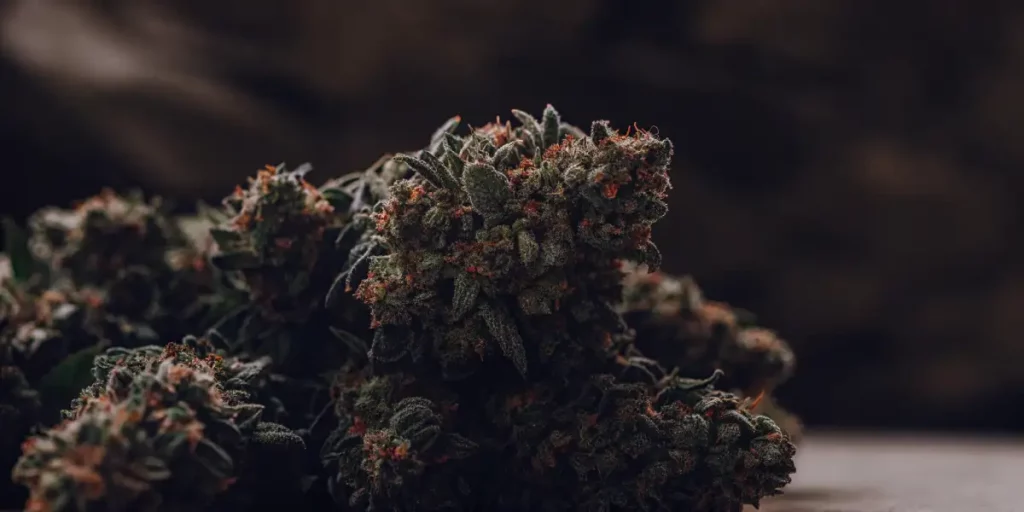
Propagation and Germination of LSD Weed Strain
For successful germination, follow these steps to ensure your LSD Weed Seeds get off to a healthy start:
1. Begin with high-quality feminized seeds from a reputable seed bank to ensure genetic stability and better germination rates.
2. Soak the seeds in distilled water or place them in a moist paper towel for 24-48 hours. Keep the temperature between 70-85°F (21-29°C) during this process to encourage sprouting.
3. Once the seeds have developed taproots, transfer them carefully into a pre-moistened growing medium, such as small pots or a seedling tray. Use light, well-aerated soil to promote root development.
4. Keep the seedlings in a warm, humid environment with gentle airflow. Provide indirect light during the first few days, gradually increasing light intensity as the seedlings grow stronger. An 18-20 hour light cycle will ensure healthy growth during the vegetative stage.
5. Once the seedlings have developed a few sets of true leaves and a strong root system, they can be transplanted into larger containers or their final growing space. Handle them gently to avoid damaging the roots during transplanting.
Vegetative Phase of LSD Weed Strain
The vegetative phase is a critical stage in the growth of your plants, as it sets the foundation for a healthy and productive flowering phase. During this stage, focus on providing ample light, nutrients, and water to support vigorous growth. LSD cannabis strain requires 18-20 hours of light per day during the vegetative phase, so using high-quality LED or HPS lights is recommended for indoor growers.
Nutrients play a key role during this phase, with a higher nitrogen content being essential for promoting leaf and stem development. Use a well-balanced cannabis fertilizer and adjust the feeding schedule based on the specific needs of your plants. Be mindful of overwatering, as this can lead to root rot or other moisture-related issues. Water your plants when the top inch of the soil feels dry, ensuring proper drainage to avoid waterlogging.
Training techniques such as low-stress training (LST) or topping can be applied during the vegetative phase to control plant height and encourage lateral growth. This helps create an even canopy, allowing light to penetrate to lower branches and promoting better bud development during the flowering stage.
Flowering Phase of LSD Weed Seeds
The flowering phase is the most anticipated stage of growing this strain, as it is when the plants begin producing their signature resin-covered buds. Flowering typically lasts 8-10 weeks, depending on environmental conditions and phenotype. To initiate flowering, reduce the light cycle to 12 hours of light and 12 hours of uninterrupted darkness.
During the flowering phase, switch from a nitrogen-rich fertilizer to one with higher levels of phosphorus and potassium. These nutrients support bud formation and overall plant health. Continue to monitor your plants for any signs of nutrient deficiencies or imbalances, adjusting the feeding schedule as necessary.
Humidity control is crucial during this stage, as high humidity levels can lead to mold or bud rot. Keep humidity between 40-50% and maintain temperatures around 65-75°F (18-24°C). As the buds grow larger and denser, it may be necessary to provide additional support for the branches to prevent them from bending or breaking under the weight of the flowers.
Cannabis Fertilization and Nutrition
Providing the right nutrients at the right time is key to maximizing your weed strain’s yield and potency. During the vegetative phase, use a fertilizer with a high nitrogen content to promote vigorous leaf and stem growth. As the plants transition into the flowering phase, switch to a bloom fertilizer with higher levels of phosphorus and potassium to support bud development and resin production.
Micronutrients such as calcium, magnesium, and iron are also important for overall plant health. Monitor the pH of the growing medium to ensure proper nutrient uptake. Soil-grown plants typically do best with a pH of 6.0-6.5, while hydroponic setups require a pH range of 5.5-6.0.
To prevent nutrient buildup, flush the plants with pure water during the final 1-2 weeks before harvest. This helps improve the flavor and smoothness of the final product.
Pest and Disease Control for Cannabis Growing
Even though LSD is a resilient strain, it is still susceptible to common cannabis pests and diseases. Preventive measures, such as keeping your growing space clean and maintaining proper air circulation, can help reduce the risk of infestations or diseases. Regularly inspect your plants for any signs of pests such as spider mites, aphids, or whiteflies. Early detection is key to preventing a full-blown infestation, so examine the leaves, stems, and buds closely for any irregularities.
Organic pest control solutions such as neem oil, insecticidal soap, or beneficial insects like ladybugs can help keep pest populations in check without harming your plants. Be sure to use these solutions early in the vegetative or flowering phases to prevent any negative impact on the buds.
In terms of disease control, mold and powdery mildew are common threats, particularly in high-humidity environments. Maintaining low humidity levels (especially during flowering) and improving airflow with fans can help prevent the growth of these fungi. Prune lower leaves and branches to increase air circulation around the plants and reduce the risk of mold forming on the buds.
Harvesting and Curing for Cannabis Growing
Harvesting your weed strain at the right time is essential to maximize potency and flavor. The optimal time to harvest is when the trichomes on the buds are mostly milky with a few amber-colored trichomes. This indicates that the THC has reached its peak potency. If you prefer a more sedative effect, wait for more amber trichomes to develop before harvesting.
Once your plants are ready, use sterilized scissors to carefully cut the branches. Handle the buds gently to avoid damaging the trichomes, which contain most of the cannabinoids and terpenes. Remove the larger fan leaves, but leave the smaller sugar leaves intact to protect the buds during drying.
Hang the branches upside down in a dark, well-ventilated space with temperatures between 60-70°F (15-21°C) and humidity levels of 50-60%. The drying process usually takes 7-14 days. After drying, cure the buds in airtight jars, opening them daily during the first week to release excess moisture. Curing for at least 2-4 weeks will enhance the flavor, potency, and smoothness of the final product.
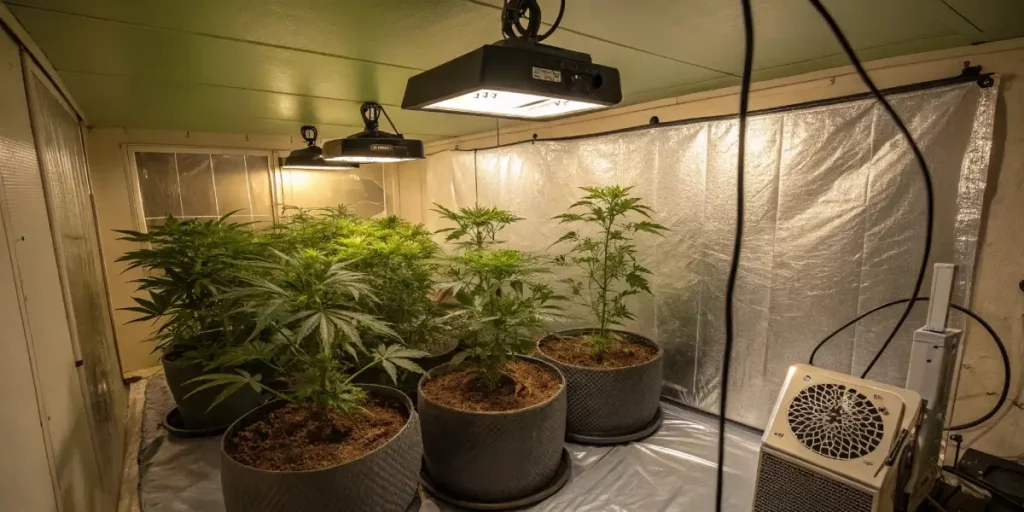
Is LSD Weed Strain Indica or Sativa?
The LSD weed strain is predominantly an Indica-dominant hybrid. With genetics derived from Mazar Sharif and Skunk #1, LSD delivers a powerful combination of relaxing body effects and uplifting cerebral stimulation. The Indica influence provides a deep, calming effect on the body, making it ideal for users seeking relaxation and relief from stress or physical discomfort.
At the same time, the Sativa elements of the strain contribute to its euphoric and talkative effects, making it suitable for social situations or creative endeavors. This balanced nature makes this strain a versatile strain that appeals to both recreational and medicinal users alike.
Advantages of Growing LSD Weed Strain
- High THC levels (19-24%) offer potent effects, making it ideal for experienced users.
- Resilient strain that is beginner-friendly and forgiving of minor mistakes during cultivation.
- Unique and flavorful profile, with earthy, skunky, and sweet notes that appeal to a wide range of users.
- Adaptable to both indoor and outdoor growing environments, providing flexibility for growers.
- Short flowering time of 8-10 weeks, allowing for quicker harvests compared to other strains.
Disadvantages of Growing LSD Seeds
- Strong odor during flowering, requiring proper odor control in indoor grows (e.g., carbon filters).
- Can be sensitive to humidity levels, particularly during the flowering stage, making proper ventilation essential.
- Lower yields compared to other high-yielding strains, but the quality and potency of the buds compensate for this.
Why Buy LSD Weed Strain
There are several compelling reasons to purchase LSD seeds:
1. High THC Potency: With THC levels ranging from 19% to 24%, it offers a potent and long-lasting high that appeals to both recreational and medicinal users seeking strong effects.
2. Fast Flowering Time: It has a relatively short flowering period of 8-10 weeks, making it a great choice for growers looking for faster harvests.
3. Unique Flavor Profile: The blend of earthy, skunky, and sweet flavors makes this strain a favorite among cannabis connoisseurs who value distinctive and flavorful strains.
4. Versatile Effects: LSD provides a balanced high that combines relaxing body effects with an uplifting mental experience, making it suitable for various occasions.
Problems in Cultivating LSD Weed Strain
While LSD is a relatively easy strain to grow, it can present some challenges, particularly for beginners. Here are a few common problems to watch out for:
Nutrient Sensitivity: It can be sensitive to overfeeding, especially during the flowering phase. Excess nutrients can lead to nutrient burn, which can negatively affect the quality of your buds. Be sure to monitor the nutrient levels and adjust the feeding schedule accordingly.
Humidity Issues: Due to its dense buds, it is prone to mold and bud rot if the humidity levels are too high during flowering. Keep the humidity below 50% during this stage and ensure proper air circulation in your grow space to avoid these problems.
Odor Control: LSD produces a strong, pungent aroma during flowering, which may be problematic for growers in residential areas. Using carbon filters or other odor control measures is essential for indoor grows to prevent the smell from becoming a nuisance.
Similar Strains to LSD Weed Strain
If you enjoy LSD, you may also want to explore these similar strains:
Mazar: shares a similar lineage with this strain, offering a potent Indica-dominant high that provides deep relaxation. It has a rich, earthy flavor with subtle hints of spice.
Skunk #1: is a classic strain that contributes to LSD’s genetics. Known for its pungent aroma and strong effects, Skunk #1 offers a balanced high with both relaxing and energizing effects.
Afghan Kush: is another Indica-dominant strain known for its powerful body high and sedative effects. It has a similar earthy and skunky flavor profile, making it a great alternative to LSD.
Tips for Professional Growers
For experienced growers looking to maximize the yield and potency of their plants, consider the following tips:
1. Optimize Light Exposure: Use high-intensity LED or HPS grow lights to provide your plants with the maximum light needed during both the vegetative and flowering phases. This will help promote better bud development and overall plant health.
2. Low-Stress Training: Apply low-stress training (LST) techniques to your plants during the vegetative phase to encourage lateral growth and create an even canopy. This will allow light to reach all parts of the plant, resulting in more bud sites and higher yields.
3. Control Humidity: Maintaining proper humidity levels, especially during the flowering phase, is crucial to preventing mold and bud rot. Invest in a dehumidifier if necessary, and ensure your grow space is well-ventilated.
4. Flush Before Harvest: Flushing your plants with pure water during the final two weeks before harvest will help remove any excess nutrients from the growing medium, resulting in smoother, better-tasting buds.
FAQs
How long does it take to grow LSD weed strain?
LSD has a relatively short flowering period of 8-10 weeks, making it a fast-growing strain compared to other varieties.
What are the effects of LSD weed strain?
LSD provides a balanced effect, offering both relaxing body sensations and uplifting mental stimulation. It is ideal for users seeking relief from stress, fatigue, and muscle spasms.
Can I grow LSD weed strain outdoors?
Yes, it can be grown outdoors, especially in warm, sunny climates. However, it is essential to monitor humidity levels and protect the plants from harsh weather conditions.
What is the THC content of LSD weed strain?
LSD typically contains THC levels between 19% and 24%, making it a potent strain with strong psychoactive effects.
What are the main flavors of LSD weed strain?
It offers a unique blend of earthy, skunky, and sweet flavors, making it a popular choice for cannabis enthusiasts who appreciate strong, distinctive flavors.


